Script is far from dead
Calligraphy guild marks 45 years with a push for new members
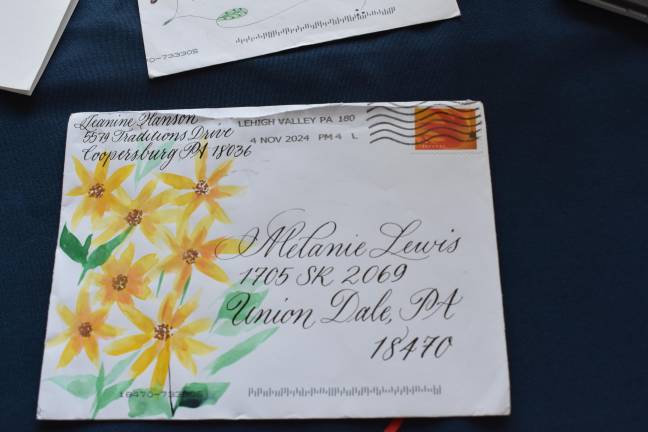
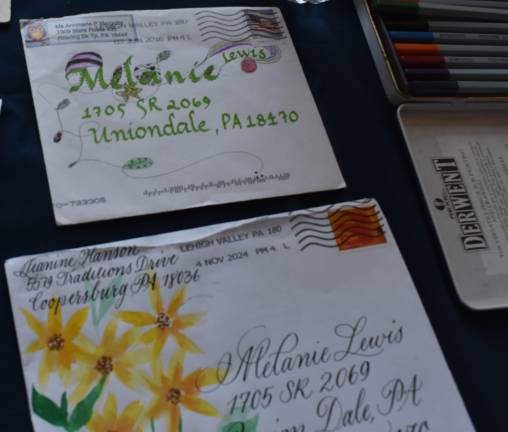
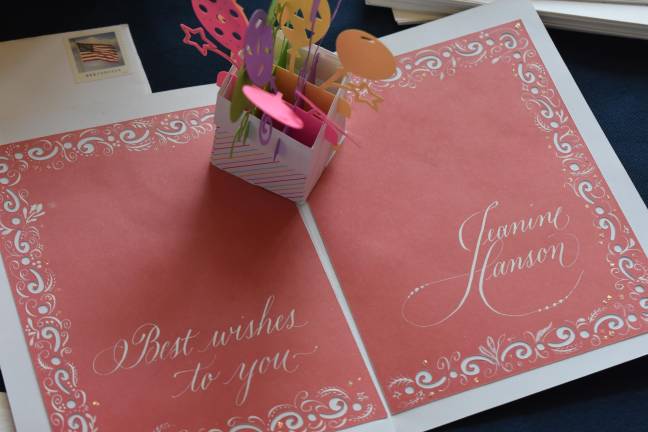
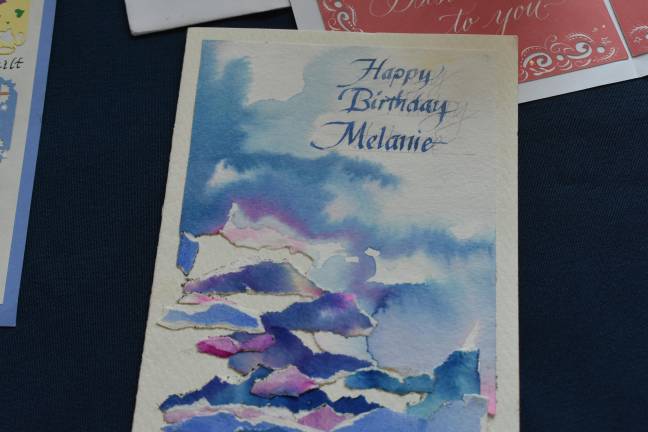
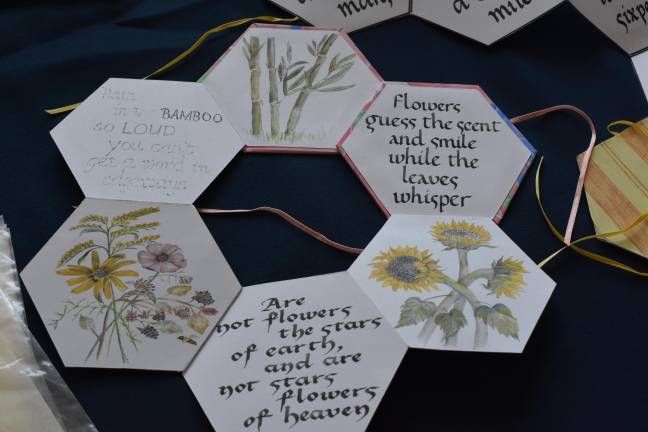
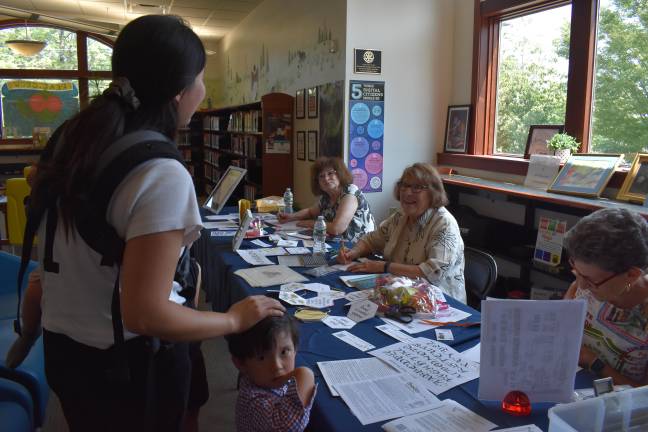
“The more we learn, the more we realize we don’t know,” said Stephanie Cavallero, president of the Calligraphers’ Guild of Northeastern Pennsylvania, her pen poised over her paper and a copy of Gothicized Italic Miniscules – the lowercase letters of a popular calligraphy style – in front of her.
Cavallero, a retired art Delaware Valley School District art teacher, was demonstrating the ancient art of calligraphy (“beautiful writing” in Ancient Greek) at the Pike County Public Library in Milford, PA on Aug. 15 along with two other longtime guild members.
Cavallero, of Matamoras, got into lettering as a child, making cards for family and signs for her aunt and uncle’s ice cream shop and eventually taking some calligraphy in college. It remained a solo hobby, though, until she happened upon a guild demonstration while visiting a friend in Scranton in 1990.
The Calligraphers’ Guild of Northeastern Pennsylvania was founded in 1980 after five calligraphers in the Scranton area put an ad in the local newspaper seeking interest. Forty-five years later, in honor of its “sapphire anniversary,” the guild is pushing to drum up membership, said Cavallero, through demonstrations, exhibits around the region and social media. “We want to get more people involved, get the guild going again,” she said.
“We do have some 20 or 30 somethings, but unfortunately jobs and children are preventing them from attending many of our events. I joined at the age of 30 and I can attest to that!,” she said. “In our guild, it is mostly the older members who are most active. And we are trying to get a little more up to speed with social media.”
It’s thanks in large part to social media that calligraphy is having a worldwide revival, just as it seemed cursive was going the way of the dodo. Calligraphy influencers are racking up millions of views among young people eager for a meditative outlet for creativity, like Paola Gallegos in Cusco, Peru, who has nearly 9 million followers on TikTok. “I do think there is a revival mostly in the realm of modern calligraphy,” said Cavallero, which builds upon traditional calligraphy but allows for more personal expression.
The surge in interest comes as researchers are discovering the benefits of writing by hand, which engages more of the brain than typing.
Annmarie Margotta, a charter member and retired nurse who served two stints as guild president, recalled the early days when membership topped 100 – a time when the majority of mothers stayed home. Now they’re down to 43 members (annual dues are $20, which includes access to a 150-book lending library, and there are about six meetings a year.) “When women started going to work, things here changed,” said Margotta.
An amateur watercolor artist, Margotta is carefully writing one of my children’s names on a bookmark to take home. She shows the kids a piece of hers on the table, a calligraphy transcription of the English nursery rhyme, There was a Crooked Man. In a visual onomatopoeia, each line occupies a hexagon, which connects to the next hexagon to form a diagonal pattern. She unfolds it to full length, then folds it back up into a booklet whose marbled cardboard covers can be wrapped up in ribbon: a pocket book.
At a moment when AI is on the brink of being able to replicate a person’s handwriting from a small sample, it may be a surprise to learn that calligrapher is not just a growing hobby but a viable career. There are about 14,000 employed calligraphers in the United States, 85 percent of them female, according to CareerExplorer, which compiles job data: 260 in New Jersey, 250 in New York and 100 in Pennsylvania. The market for calligraphers – who might pen wedding invitations or certificates, or engrave a wine bottle for a special occasion – is actually expected to grow by four percent by 2032. They make an average salary of $75,000 and enjoy an unusually high level of job satisfaction.